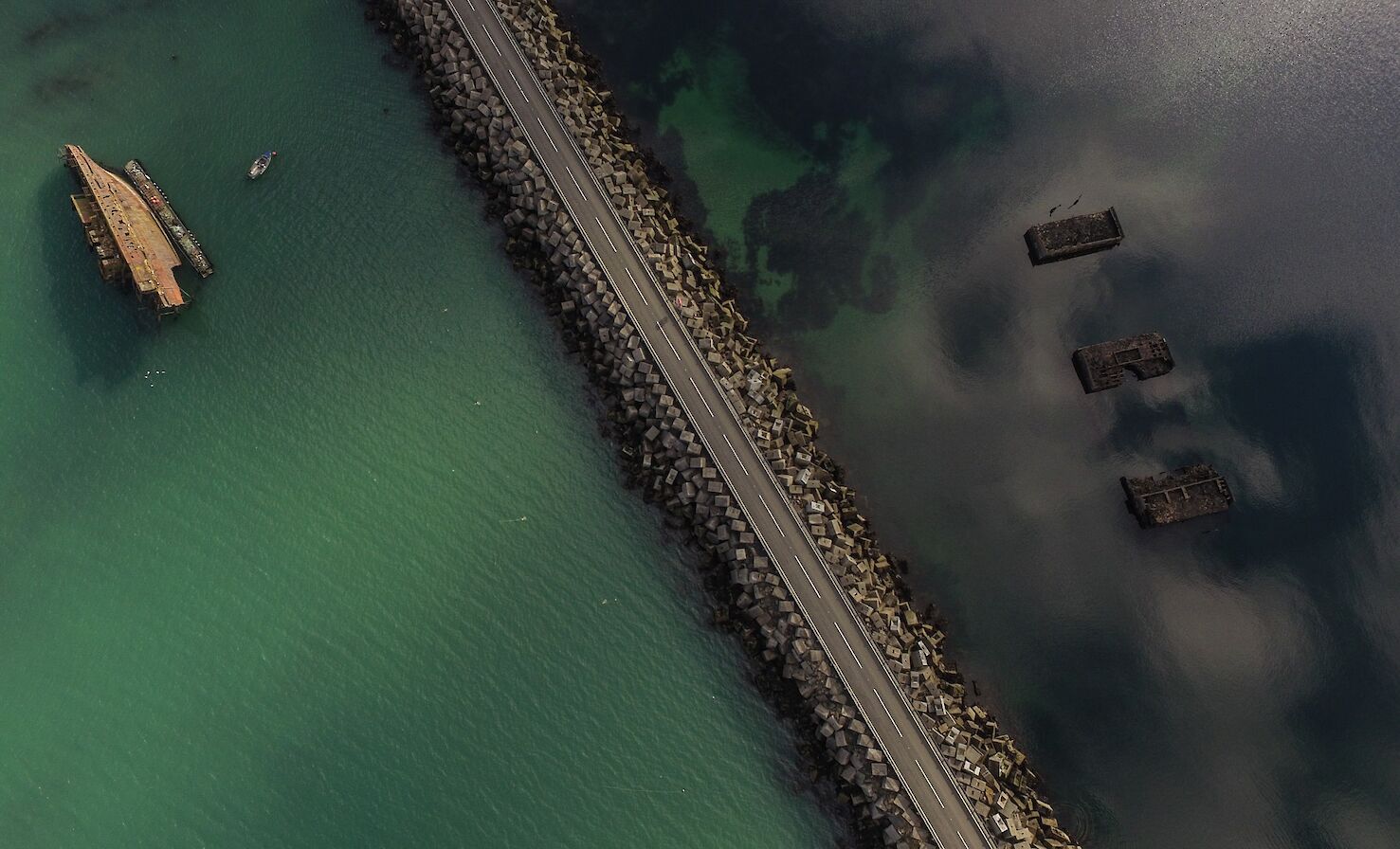Churchill Barriers
Orkney
Born from a time of conflict but now serving as vital links between island communities, these remarkable structures have become as iconic as many of Orkney’s more ancient landmarks.
It was the sinking of HMS Royal Oak more than 80 years ago that set in motion plans to build these four concrete causeways. A German U-boat crawled into Scapa Flow in October 1939 and fired torpedoes at the slumbering battleship, resulting in the loss of 834 lives.
The disaster prompted then First Lord of the Admiralty, Winston Churchill, to order the building of the Churchill Barriers to block off the eastern approaches to the naval anchorage of Scapa Flow.
Work on the barriers began in May 1940 and was completed four years later. Much of the labour for this massive engineering project was provided by Italian prisoners of war, held in a camp on the island of Lamb Holm. During their time in Orkney, these prisoners built another remarkable structure, transforming a basic Nissen hut into a stunning symbol of peace, the world-famous Italian Chapel.
Officially opened in May 1945, the barriers now act as causeways connecting the Orkney mainland with the isles of Lamb Holm, Glimps Holm, Burray and South Ronaldsay. It's a fascinating road trip, and you can still see the wrecks of blockships previously used to block the channels into Scapa Flow en-route. There are beautiful beaches to enjoy, and the barriers are also a brilliant place to try and spot bird and sealife. You can even snorkel or dive at some of the blockships too.




